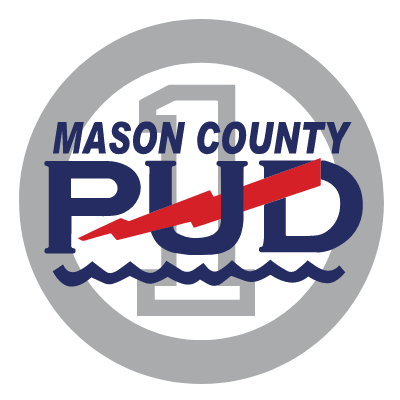Mason County PUD No. 1’s board of commissioners passed a resolution recently in support of the federal Columbia River Power System and the four lower Snake River dams. The reason for this is that our utility, along with the region’s public power community at large, realize that the lower Snake River and Columbia River dams must stay in service if our region wants to ensure that we have reliable baseload energy to power our communities during the winter and during peak energy times, and to ensure that power rates are affordable for residents.
We know that customers might be tired of hearing us beat the hydropower drum, but we do it out of a sense of urgency. Our state has set a clean energy rule that we have to achieve by 2045. We need hydropower to achieve it. Our state has also earmarked money for a task force to study the impacts of the removal of the lower Snake River dams. Achieving a 100% clean energy standard cannot happen without the dams and removing the dams will not single-handedly save our salmon and orcas. We must have a strategic, multi-pronged approach for both of those goals.
HYDRO IS OUR CARBON FREE BACKBONE
The lower Snake River dams produce over 3,000 megawatts of carbon free power, with the entire Federal Columbia River Power System (FCRPS) amounting to the largest source of clean, renewable electricity in the Pacific Northwest. Without this hydro-powered backbone on our energy grid, our region would experience near-constant brownouts and blackouts when the sun isn’t shining and the wind isn’t blowing, and when the west coast is at peak demand for energy consumption. The loss of hydropower negates any efforts to achieve a carbon-free portfolio in Washington State by 2045.
WE CAN’T AFFORD THE ALTERNATIVES
The region would need to compensate for the lack of hydropower baseload with other baseload-capable energy sources like coal and gas fired power plants and nuclear, the first two being high carbon emitters. Bonneville Power Administration (BPA) estimates the loss of hydropower generated by the four lower Snake River dams alone would increase power costs by $274 – $372 million each year, with those costs being borne by customers of the BPA, such as Mason PUD No. 1 customers. Additionally, the increase in CO2 emissions from the loss of the clean hydropower will result in up to 2.6 million metric tons released into our atmosphere every single year moving forward.
The fallout costs continue to climb for the lack of shipping and transportation that the FCRPS provides, the loss of irrigation for our northwest farming communities, rebuilding and reinforcing transmission systems, the loss in revenues to support fish and wildlife, and the overwhelming expense of trying to build out enough solar and wind generation to fill the energy gap, which would escalate into the billions of dollars.
WE NEED THE CONTINUED INVESTMENT IN FISH AND WILDLIFE HABITAT
BPA also estimates that it will cost between $1.3 and 2.6 billion to breach the four lower Snake River dams. These are tremendous amounts of federal funds that could be used to achieve better outcomes for fish and wildlife through other means like funding culvert replacements, saltwater habitat restoration projects in the Puget Sound and Pacific Ocean, stream habitat restoration, etc. BPA also reports that the dams are “on track to achieve standards of 96 percent average dam survival for young spring chinook and steelhead migrating downstream, and 93 percent for young summer migrating fish”. This is largely due to the $900 million that is invested annually by Pacific Northwest public power ratepayers through their power bills. Roughly 25% of every dollar is spent toward fish and wildlife habitat restoration at the FCRPS dams. Fish and orca survival will depend on the coordination of multiple factors in addition to fish passage at dams. We need to clean up our waterways and coast lines, we need to curb the aquatic noise from water traffic that is scattering the orca’s food sources and disrupting their feeding. We need to penalize polluters both in the U.S. and in Canada who dump raw sewage and pollutants into our water. We need to do more to protect salmon from the explosion in population of natural predators and overharvesting by humans. Again, it will take a multitude of coordinated activities to get where we need to be.
PUBLIC DOLLARS SHOULD BE SPENT IN AN IMPACTFUL WAY
Responsible management of the federal hydro system needs to be one component of the solution to ensuring fish runs are successful and the food chain is stable. Removing the dams makes for a good slogan on a t-shirt, but it does not make good economic, environmental or energy sense. It is counterproductive to the strides made in energy and environmental policy on both a state and federal level. Our region cannot sustain the environmental and economic losses of the removal of the dams. While the examination of dam removal for facilities that have outlived their useful life continues to be a viable environmental strategy, the use of public tax dollars to fund a task force and study for the dismantling of our federal hydro system is a waste. Those monies could be applied toward real, viable solutions that look at a comprehensive solution for ensuring the longevity of our salmon, orcas and wildlife habitat.
Our commission meets the 2ndand 4thTuesdays of the month at 1:00 p.m. at the PUD 1 office in Potlatch. If you want more information on the PUD’s position on hydropower, you’re always welcome to attend and discuss. If anyone would like more information on the statistics that we have cited, please visit Northwest River Partner’s website and click on their “Data & Resources” tab.
Mason County PUD No. 1 Board of Commissioners
Ron Gold, President
Mike Sheetz, Vice President
Jack Janda, Secretary
